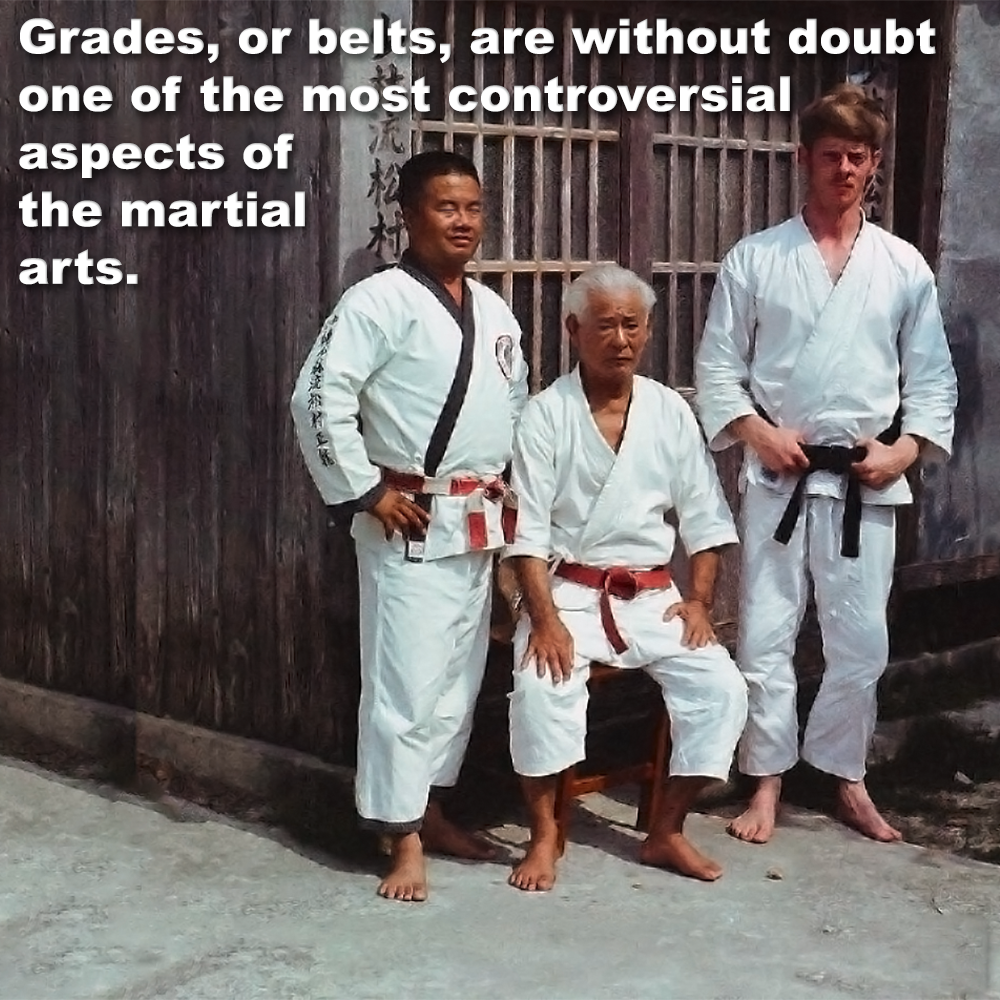
Grades, or belts, are without doubt one of the most controversial aspects of the martial arts.
Posted by ADAM CARTER on JAN 24, 2024

Grades, or belts, are without doubt one of the most controversial aspects of the martial arts.
(2 minute and 27 second read)
Grades, or belts, are without doubt one of the most controversial aspects of the martial arts. They can cause many problems and any discussion, usually become extremely toxic.
For those of you that don’t know. A grade or belt, is an agreement between you and an instructor (or organization), that you represent what they teach, and should be an indicator of your knowledge and dedication to your style, or group…… that’s it. Outside of that group, your grade could be meaningless, without value to others and it also represents nothing relative to others’ abilities.
Just because you may have been teaching and training for many years does not give you (or me) an automatic entitlement to the same grade in any other style, group or association.
There isn’t any universal standard governing how grades are defined, and each martial art has its own traditions, rules and principles on how they are awarded.
To most, the black belt signifies a significant milestone. It represents years of dedicated training, honed skills, and a deep understanding of the art’s basic principles (well it should).
But for many dedicated practitioners, the journey doesn’t end there.
In addition to the ‘dan’ grading system used by most Japanese and Okinawan martial arts, there is a parallel system called “Shogo” (称号). This translates into English as “title”, which was created by the Dai-Nippon Butoku-Kai (大日本武徳会 – Greater Japan Martial Virtue Society) in 1895 during the Meiji era.
These titles, acknowledge not just technical prowess but also proficiency in teaching, character, and contributions to an art’s preservation and evolution.
These Shogo titles are “Renshi”, “Kyoshi”, and “Hanshi”. Each title carries a distinct meaning and is often associated with a specific belt color.
The first of these titles is “Renshi” (練士) meaning: “Polished Expert”, sometimes represented by a red belt with a black stripe running through the belt. Renshi signifies a profound understanding of the art you practice, the holder showing the ability to refine and transmit knowledge effectively, with a strong commitment to self-improvement.
The second title “Kyoshi” (教士), meaning: “Master Teacher” or “Expert Instructor”, often associated with a red and white striped belt. Kyoshi denotes a high level of teaching skill, with an exceptional ability to inspire and guide students, also showing a deep understanding of your art’s philosophical and cultural dimensions.
Finally there is the title of “Hanshi”(範士), meaning: “Grand Master” or “Teacher of teachers”, traditionally associated with a solid red belt (aka-obi). The title of Hanshi represents the pinnacle of achievement within your art. The title recognizing exceptional technical mastery, profound wisdom, and a lifetime dedicated to the martial arts preservation and advancement.
I acknowledge, that regrettably, the donning of these belts is frequently criticized and can be a source of controversy.
In some organizations, once awarded, these belts are always worn. In others, they’re considered ceremonial belts and only worn on special occasions. Those practitioners typically wear a regular black belt (which can also show 1,2 or 3 bars to signify the level of “shogo” – not the same as ‘dan’ grade bars) during normal classes.
For those that have stuck at it, persevered, and earned that title, it means a great deal. Perhaps recognition for a life-time of dedication, sometimes awarded without prior knowledge by a very senior master or teacher.
But for me personally, the true reward lies in the respect and validation bestowed by the person who awards it.
